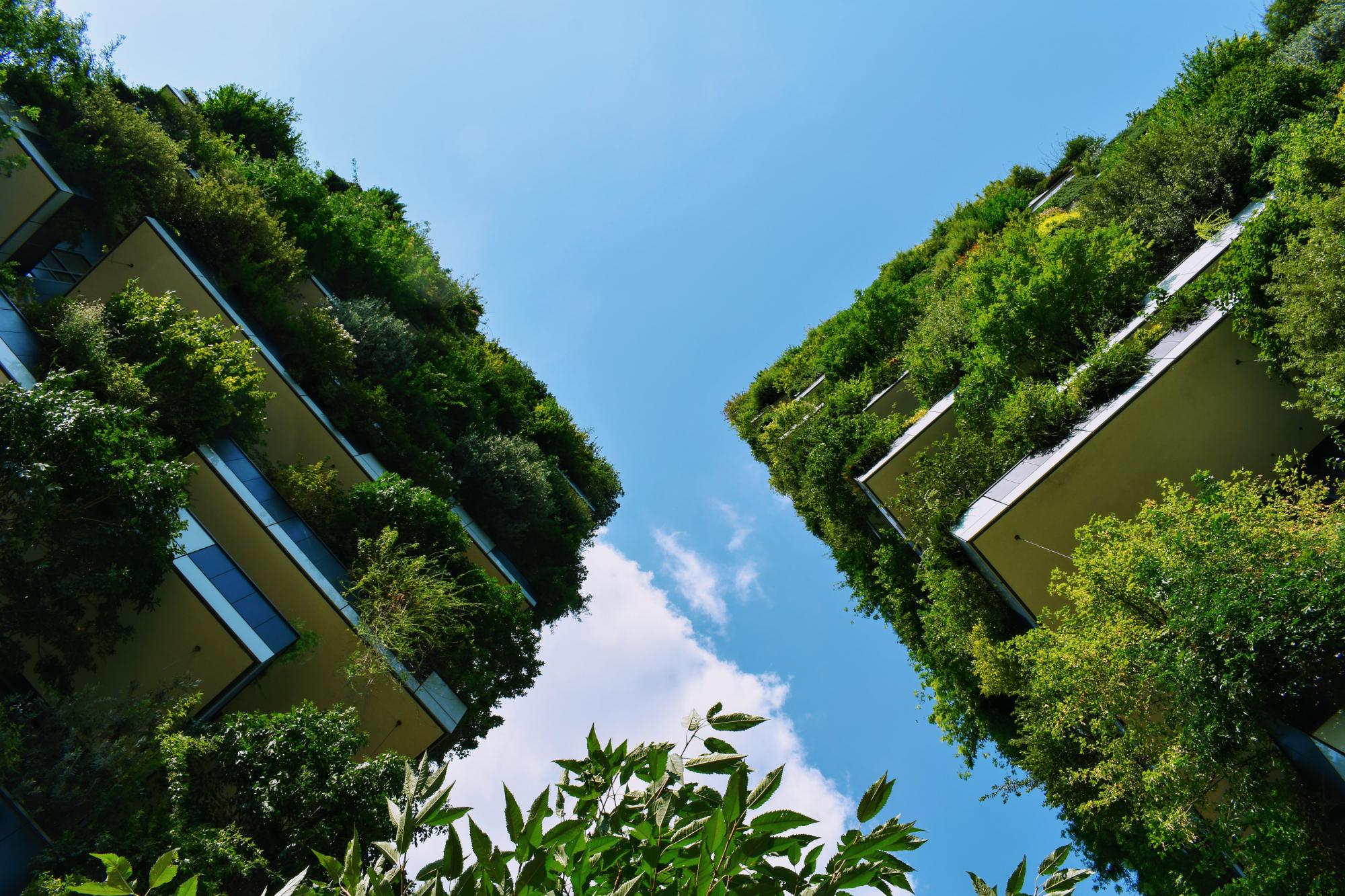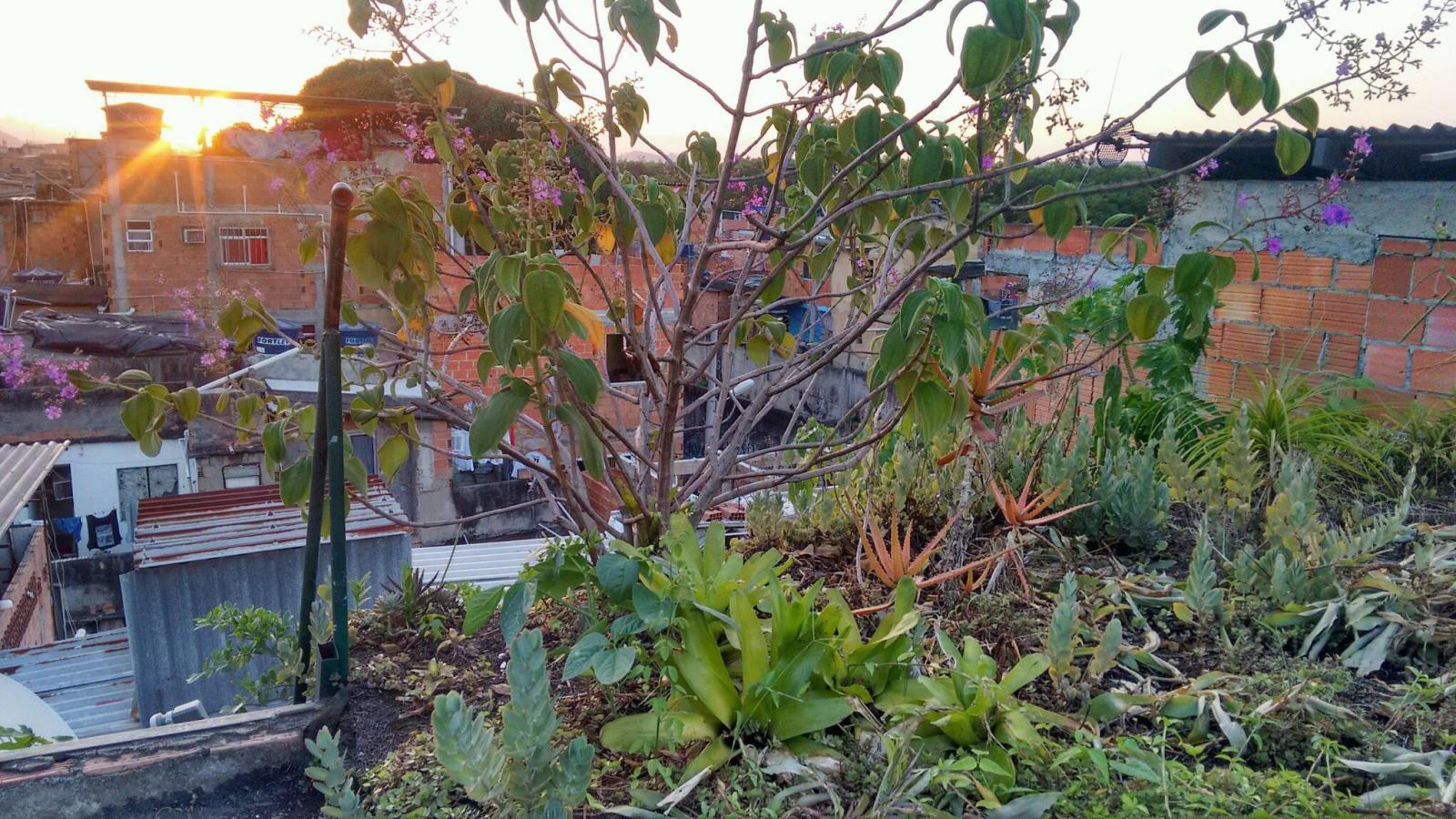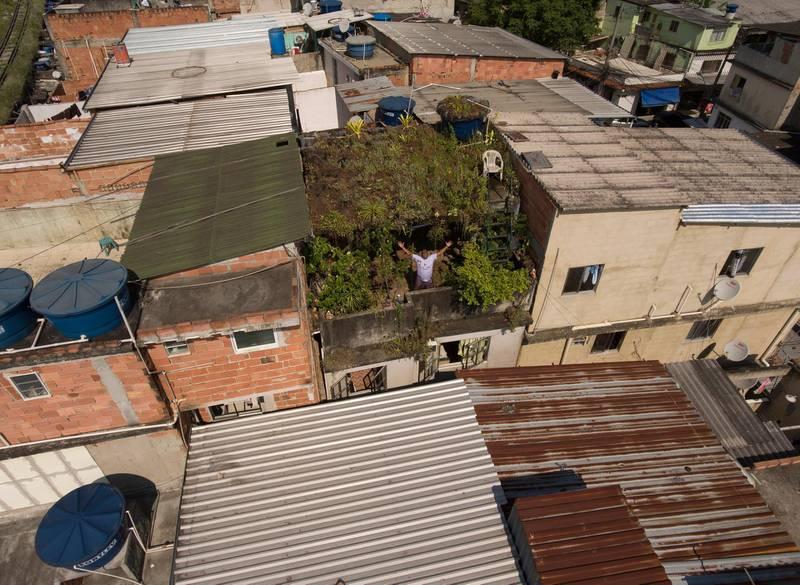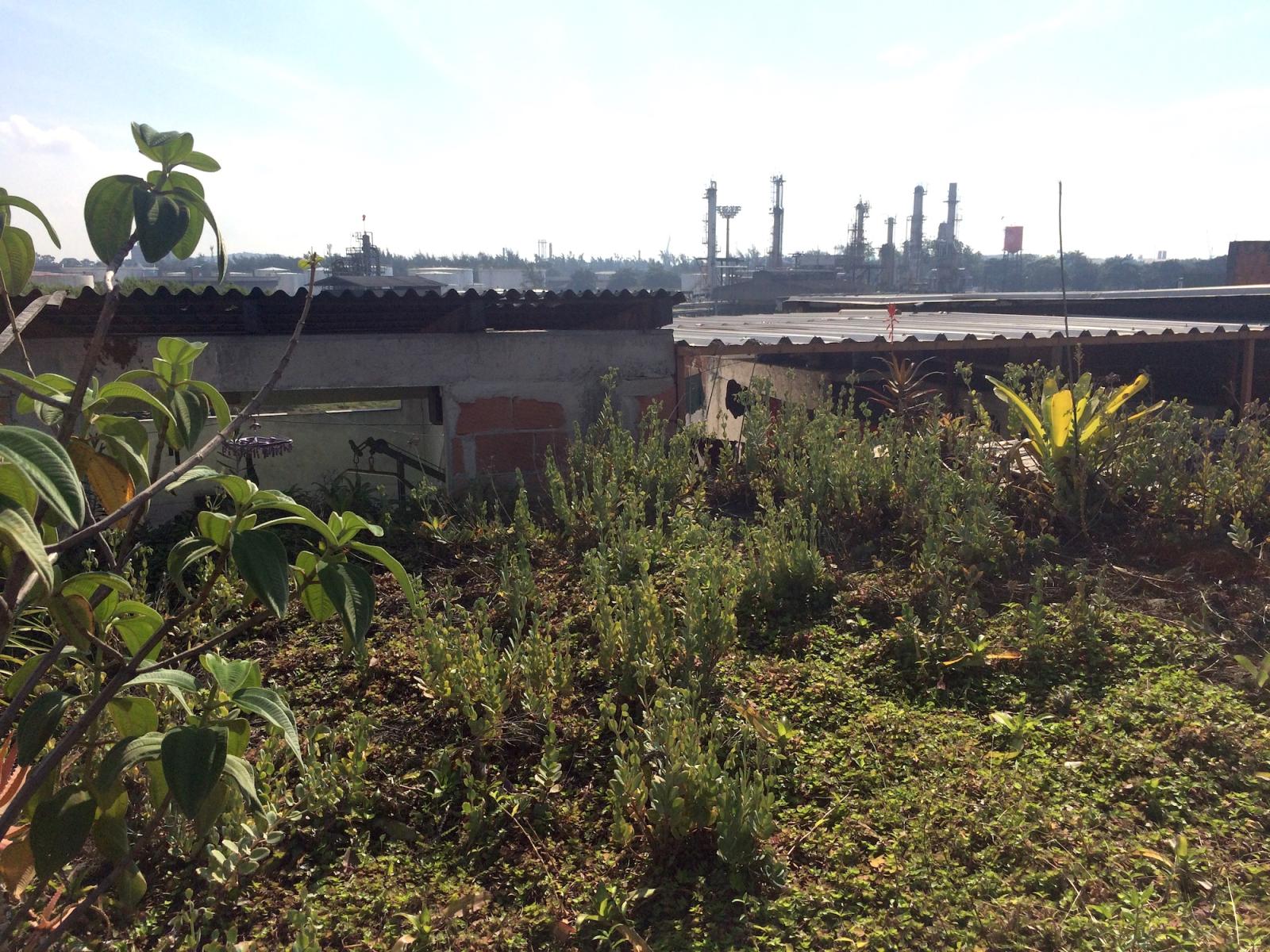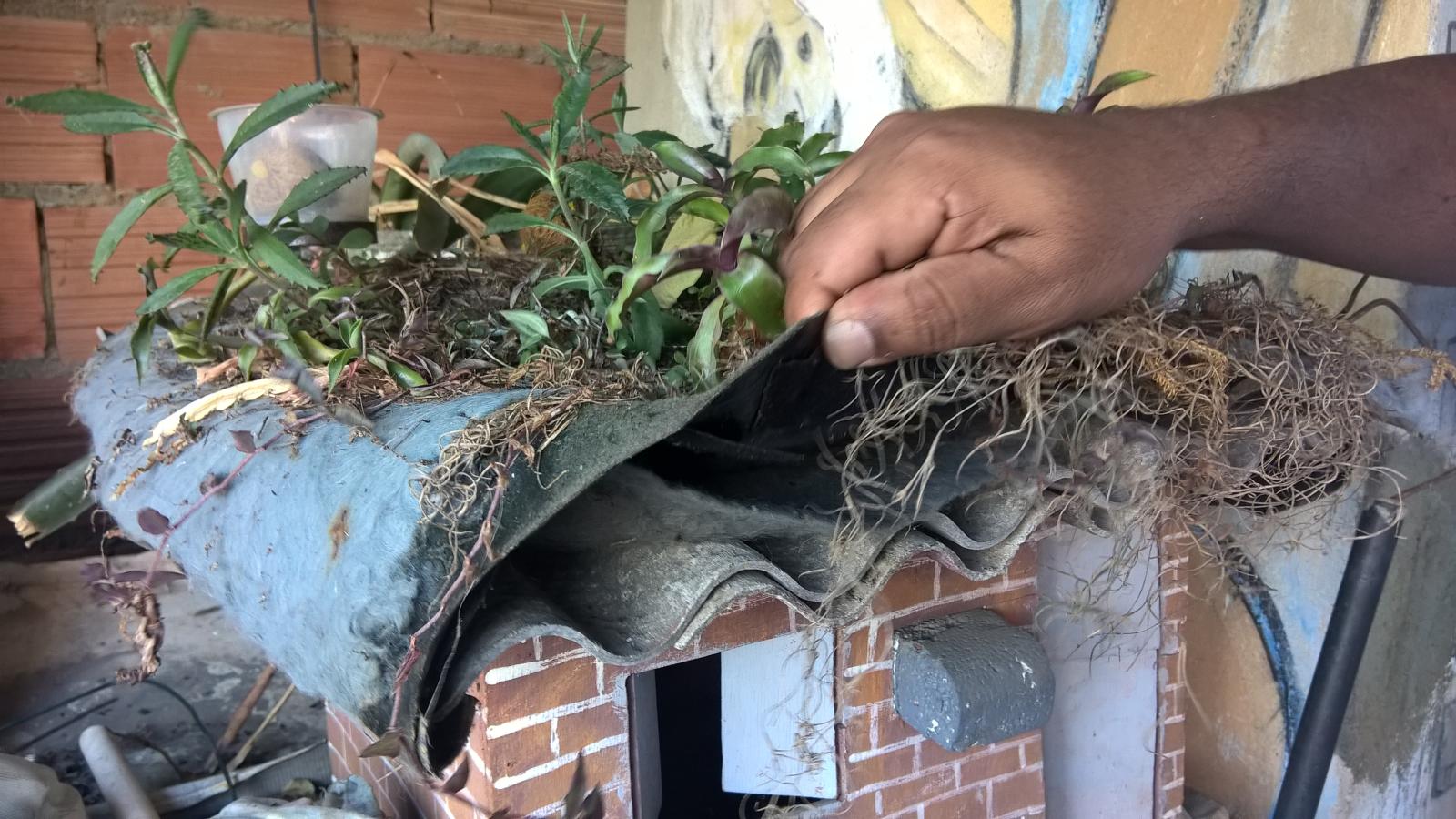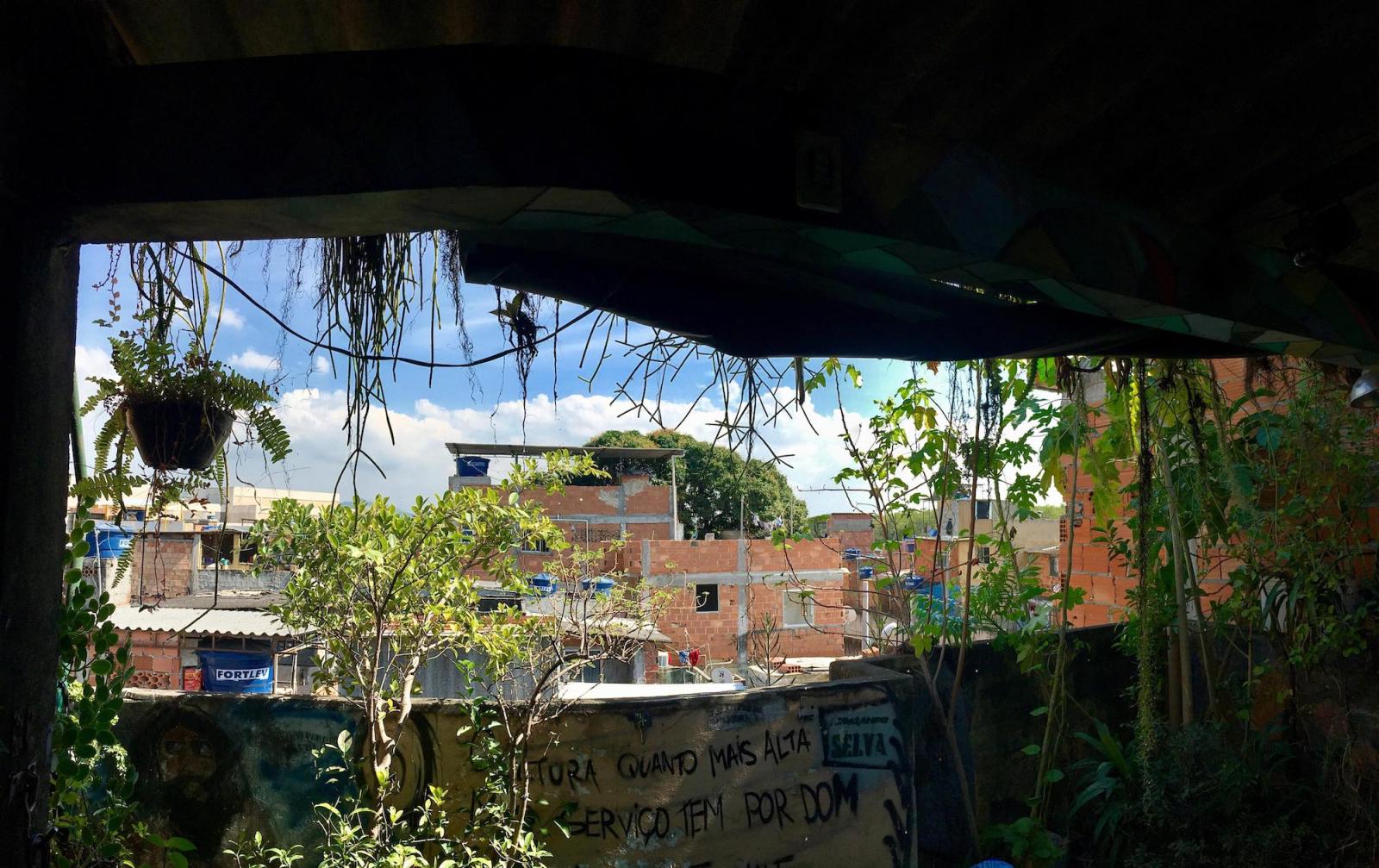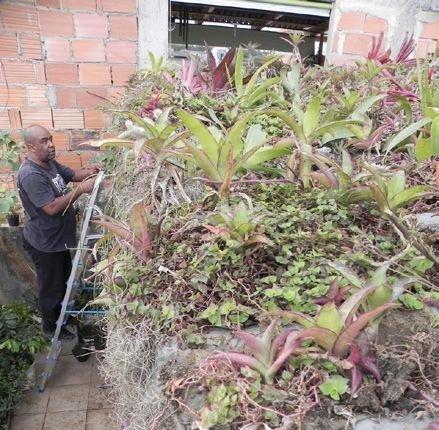Last updated: April 2022
The project focuses on encouraging residents of Rio de Janerio's Arará favela to install green roofs on their homes, primarily to reduce the urban heat island effect but also to harness the broader social, environmental, and economic benefits which green roofs can provide, "...from providing thermal protection and improving air quality to mitigating stormwater runoff pollution and saving costs for both residents and cities" (Refs. 2 & 3). The individual behind the project, Luis Cassiano Silva, further hopes that introduction of green roofs into the favela which help to improve residents’ quality of life and "describes the emotional benefits of incorporating green space into the favela landscape" (Ref. 2).
Overview
Nature-based solution
- Nature on buildings (external)
- Green roofs
Key challenges
- Climate action for adaptation, resilience and mitigation (SDG 13)
- Climate change adaptation
- Environmental quality
- Air quality improvement
- Green space, habitats and biodiversity (SDG 15)
- Green space creation and/or management
- Water management (SDG 6)
- Stormwater and rainfall management and storage
- Social justice, cohesion and equity (SDG 10)
- Environmental education
Focus
Creation of new green areas, Knowledge creation and awareness raising
Project objectives
The objective of the intervention "is simple: to transform an urban heat island through a refreshing and soothing “green canopy”—in effect, making the area a more pleasant place to live. To this end, the initiative works to educate residents about green roofs and their capacity to reduce temperatures" (Ref. 2).
Implementation activities
The project focuses on "guid[ing] residents in the process of creating green roofs—from acquiring materials to building the roof. In addition, one of the initiative’s main activities is educating children in the community about the importance of respecting plants, and more broadly, the environment" (Ref. 2). Cassiano, the individual behind the project, describes how “Most children in the favela have no interaction with the forest and do not respect it… It’s a culture of destruction. We must educate them, slowly,” (Ref. 2).
Climate-focused activities
Climate change adaptation:
- Increase or improve urban vegetation cover to help reduce outdoor temperature
- Create or improve outdoor spaces to help people escape from urban heat
- Implement green walls or roofs to lower indoor temperature and provide insulation
- Increase the use of climate-resilient plant species (resistant to drought, fire, and pests)
Main beneficiaries
- Citizens or community groups
Governance
Management set-up
- Led by non-government actors
Type of initiating organisation
- Citizens or community group
Participatory approaches/ community involvement
- Unknown
Details on the roles of the organisations involved in the project
The project was started by Luis Cassiano Silva, a resident of Parque Arará for twenty-five years and has worked in various fields—theatre, cinema, music, and show production (Ref. 2). Cassiano "describes himself as a ”cultural activist”, and devotes his free time to the project (Ref. 2). Cassiano further "sought out the technical support of Bruno Resende, whose thesis examined the construction of green roofs in Brazil", and together, they developed and researched the project, experimenting with various techniques and vegetation adapted to Brazil’s tropical climate (Ref. 2).
Project implemented in response to ...
... an EU policy or strategy?
No
... a national policy or strategy?
No
... a local policy or strategy?
No
Financing
Total cost
Unknown
Source(s) of funding
- Unknown
Type of funding
- Unknown
Non-financial contribution
Unknown
Impacts and Monitoring
Environmental impacts
- Climate change
- Lowered local temperature
- Environmental quality
- Improved air quality
- Water management and blue areas
- Improved stormwater management
- Green space and habitat
- Increased green space area
- Increased number of species present
Economic impacts
- Other
Socio-cultural impacts
- Safety
- Decreased crime rates
- Social justice and cohesion
- Improved social cohesion
- Improved liveability
- Improved access to urban green space
- Health and wellbeing
- Improved physical health
- Improved mental health
- Cultural heritage and sense of place
- Improvement in people’s connection to nature
- Increased appreciation for natural spaces
- Education
- Increased knowledge of locals about local nature
Type of reported impacts
Expected impacts, Achieved impacts
Presence of formal monitoring system
Unknown
Presence of indicators used in reporting
No evidence in public records
Presence of monitoring/ evaluation reports
No evidence in public records
Availability of a web-based monitoring tool
No evidence in public records
References
1. Oliver, E., Ozment, S., Silva, M., Watson, G., Grünwaldt, A. (2021). Nature-Based Solutions in Latin America and the Caribbean: Support from the Inter-American Development Bank. Washington, DC: Inter-American Development Bank and World Resources Institute. Source link
2. Robin, A. (2018). Green Roof Favela [PROFILE] #SustainableFavelaNetwork. Rio de Janeiro: Rio On Watch. Source link
3. Oppla (n.d.). Green roofs in the slums of Rio de Janeiro, Brazil. Udenhout: Oppla. Source link
4. Skirka, H. (2020). How Rio's favela residents are 'greening' their homes – in pictures. Abu Dhabi: The National FZ LLC. Source link.
2. Robin, A. (2018). Green Roof Favela [PROFILE] #SustainableFavelaNetwork. Rio de Janeiro: Rio On Watch. Source link
3. Oppla (n.d.). Green roofs in the slums of Rio de Janeiro, Brazil. Udenhout: Oppla. Source link
4. Skirka, H. (2020). How Rio's favela residents are 'greening' their homes – in pictures. Abu Dhabi: The National FZ LLC. Source link.
Cassiano's Rooftop
https://www.thenationalnews.com/lifestyle/travel/how-rio-s-favela-residents-are-greening-their-homes-in-pictures-1.970232
Information about this nature-based solution was collected as part of the UNA global extension project funded by the British Academy.
